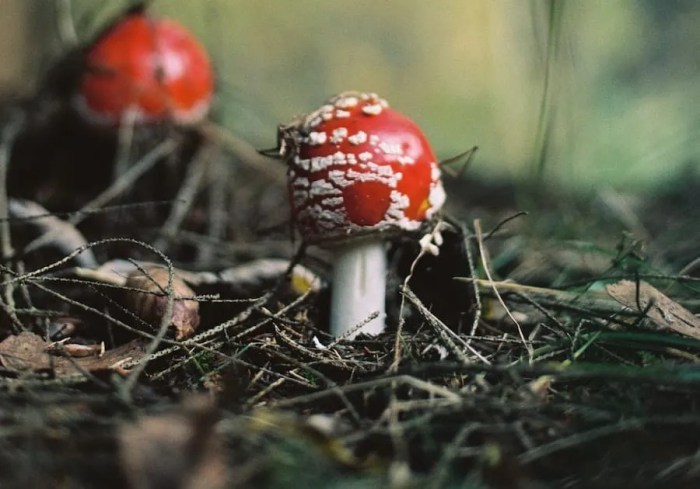
Embark on a journey into the world of psychedelic experiences with our exploration of “How Long Does it Take for Shrooms to Kick In?” Delve into the intricacies of this transformative substance, unraveling the factors that govern its onset and the profound effects it has on perception and cognition.
From understanding the average onset time to deciphering the physical manifestations that accompany the experience, this guide will provide you with a comprehensive understanding of the timeline and effects of ingesting shrooms.
Factors Influencing Shroom Onset

The time it takes for shrooms to kick in varies from person to person and depends on several factors. Understanding these factors can help you better predict the onset time and adjust your expectations accordingly.
The time it takes for shrooms to kick in can vary depending on a number of factors, including the dose, the method of ingestion, and the individual’s metabolism. Generally speaking, it takes about 30-60 minutes for shrooms to kick in when eaten, and about 15-30 minutes when taken in tea form.
You can learn more about the onset time of shrooms by reading more here .
Stomach Contents
Having food in your stomach can significantly slow down the absorption of shrooms. This is because the food competes with the shrooms for digestive enzymes and can delay their breakdown and absorption into the bloodstream.
If you’re curious about how long it takes for shrooms to kick in, you’re not alone. Many people wonder about the timeline of effects when consuming magic mushrooms. The answer to how long does it take for shrooms to kick in can vary depending on several factors.
For more detailed information on this topic, check out this comprehensive guide: how long does it take for shrooms to kick in .
Metabolism
Your metabolism also plays a role in how quickly shrooms take effect. People with faster metabolisms tend to experience a faster onset time than those with slower metabolisms.
If you’re wondering how long it takes for shrooms to kick in, you’re not alone. It’s a common question with a lot of variables. Check out how long does it take for shrooms to kick in for more information on how long it takes for shrooms to kick in.
Dosage
The amount of shrooms you consume can affect the onset time. Higher doses generally take longer to kick in than lower doses.
Strain
Different strains of shrooms can have different onset times. Some strains, such as Golden Teachers, are known for their relatively fast onset time, while others, such as Penis Envy, may take longer to kick in.
If you’re curious about how long it takes for shrooms to kick in, you’re not alone. Many people wonder the same thing. The answer, however, can vary depending on a number of factors. To get a better understanding of this topic, check out how long does it take for shrooms to kick in . This comprehensive article delves into the various factors that can affect the onset of shroom effects, providing valuable insights for those seeking more information.
Form of Ingestion
The form in which you ingest shrooms can also influence the onset time. Eating shrooms directly takes longer to kick in than consuming them in tea or capsules.
| Factor | Impact on Onset Time |
|---|---|
| Stomach Contents | Slows down onset time |
| Metabolism | Faster onset time with faster metabolism |
| Dosage | Higher doses take longer to kick in |
| Strain | Different strains have different onset times |
| Form of Ingestion | Eating shrooms directly takes longer than consuming them in tea or capsules |
Average Onset Time
The average time it takes for shrooms to kick in can vary depending on several factors, but generally, the effects begin to manifest within 30 to 60 minutes after ingestion.
Variability in Onset Time
The onset time can vary among individuals due to factors such as metabolism, body weight, and the amount of shrooms consumed. Some individuals may experience the effects more quickly, while others may take longer.
Shrooms can take anywhere from 20 minutes to 2 hours to kick in, depending on factors like your metabolism and the dosage. If you’re looking for a more in-depth look at the effects of shrooms, check out Greene , a comprehensive resource for all things psychedelic.
Back to our topic, once the shrooms start to kick in, you can expect to experience a range of effects, including visual distortions, altered perception of time, and heightened emotions.
Effects on Perception and Cognition
Shrooms induce gradual changes in perception and cognition. Initially, users may experience heightened senses, with colors appearing more vibrant and sounds becoming more distinct. As the effects intensify, visual distortions can occur, including the perception of objects as larger or smaller than they actually are, or the presence of patterns and textures that were not previously visible.
Sensory Alterations
Sensory alterations are common during a shroom experience. Users often report enhanced visual perception, with colors appearing more vivid and details becoming more noticeable. Auditory perception can also be affected, with sounds becoming more distinct and immersive. Some users may experience synesthesia, where different senses are blended together, such as hearing colors or tasting sounds.
Cognitive Effects
Shrooms can also have significant cognitive effects. Users may experience altered states of consciousness, with a sense of heightened awareness and introspection. Thought patterns can become more fluid and creative, and users may find themselves more open to new ideas and perspectives.
In some cases, shrooms can trigger profound spiritual or mystical experiences.
Influence of Onset Time
The onset time of shrooms can influence the intensity of the effects on perception and cognition. A faster onset time can lead to a more rapid and intense experience, while a slower onset time can result in a more gradual and controlled experience.
Users who are new to shrooms may prefer a slower onset time to allow them to acclimate to the effects more gradually.
Physical Manifestations
The onset of shrooms can also be accompanied by a range of physical symptoms. These may vary from person to person and depend on the dose consumed, but some common effects include:
- Nausea:This is a common side effect of shrooms, especially at higher doses. It usually occurs within the first 30-60 minutes after ingestion and can last for several hours.
- Vomiting:Vomiting is less common than nausea but can occur in some people. It is typically associated with higher doses of shrooms and can be a sign of dehydration.
- Increased heart rate:Shrooms can cause an increase in heart rate, which can be noticeable during physical activity or when lying down.
- Dilated pupils:The pupils of the eyes may dilate after taking shrooms, making them appear larger than usual.
- Sweating:Some people experience sweating after taking shrooms, especially in warm environments.
- Chills:Shrooms can also cause chills, especially at higher doses. This is typically associated with the vasoconstriction of blood vessels in the skin.
- Muscle weakness:Some people may experience muscle weakness or fatigue after taking shrooms, especially at higher doses.
Enhancing or Delaying Onset: How Long Does It Take For Shrooms To Kick In

Factors influencing shroom onset can be leveraged to potentially speed up or slow down the effects. Modifying the onset time allows for greater control over the experience, whether seeking a quicker onset for recreational purposes or a gradual onset for therapeutic settings.
So, you’re curious about how long it takes for shrooms to kick in? Well, it depends on a few factors, like your metabolism and how much you take. But generally speaking, you can expect to feel the effects within 20 to 40 minutes.
If you’re looking for more information, check out this article: how long does it take for shrooms to kick in . It has some great tips on how to make the most of your trip.
Methods for Enhancing Onset
- Ingestion Method:Consuming shrooms on an empty stomach allows for faster absorption, leading to a quicker onset. Avoid mixing with other substances, as they can delay absorption.
- Lemon Tek:Mixing shrooms with lemon juice enhances their bioavailability by converting psilocybin into psilocin, resulting in a faster and more potent onset.
- Tea Preparation:Brewing shrooms into a tea releases their active compounds more quickly than ingesting them whole. This method provides a quicker onset and can also reduce nausea.
Methods for Delaying Onset, How long does it take for shrooms to kick in
- Full Stomach:Eating a meal before consuming shrooms slows down absorption, leading to a delayed onset. High-fat foods can further delay absorption.
- Gradual Consumption:Instead of consuming the entire dose at once, divide it into smaller portions and take them over time. This allows for a gradual onset and reduces the risk of overwhelming effects.
- MAOI Inhibition:Monoamine oxidase inhibitors (MAOIs), such as antidepressants, can delay the breakdown of psilocybin, prolonging the onset and duration of effects.
Ending Remarks

In conclusion, the onset time of shrooms is a multifaceted phenomenon influenced by a myriad of factors. By comprehending these variables, individuals can tailor their experiences to achieve the desired intensity and duration of effects. Whether seeking a profound spiritual journey or a recreational exploration, this guide has equipped you with the knowledge to navigate the world of shrooms with confidence and clarity.
Essential Questionnaire
What factors influence the onset time of shrooms?
The onset time of shrooms is influenced by factors such as dosage, strain, individual metabolism, and environmental conditions.
What is the average onset time for shrooms?
The average onset time for shrooms is typically between 20 to 40 minutes, but it can vary depending on individual factors.
How do shrooms affect perception and cognition?
Shrooms can alter perception and cognition by enhancing sensory experiences, inducing euphoria, and promoting introspective thoughts.
What physical manifestations may accompany the onset of shrooms?
Physical manifestations of shroom onset may include nausea, dilated pupils, increased heart rate, and sweating.





